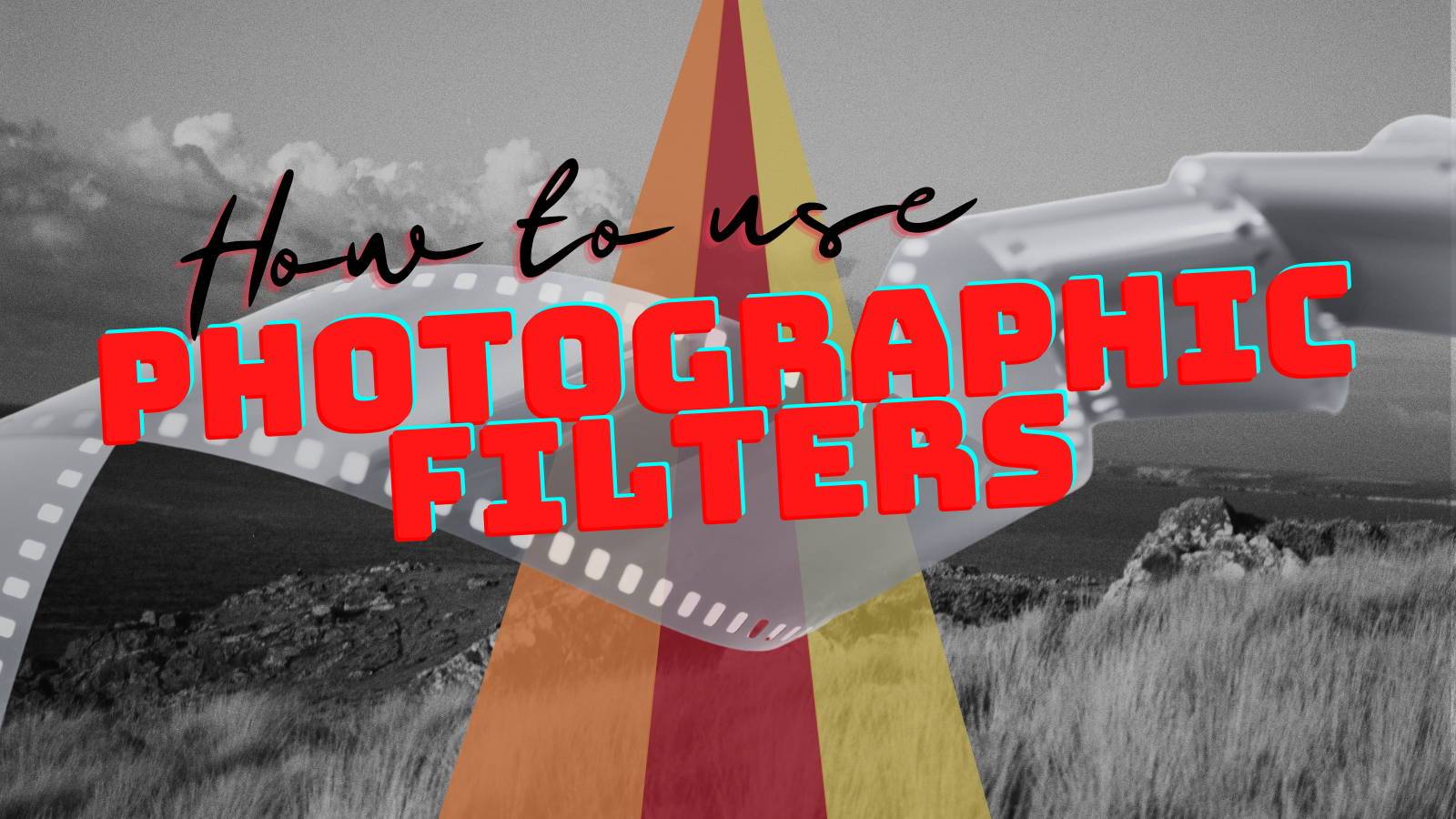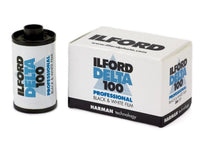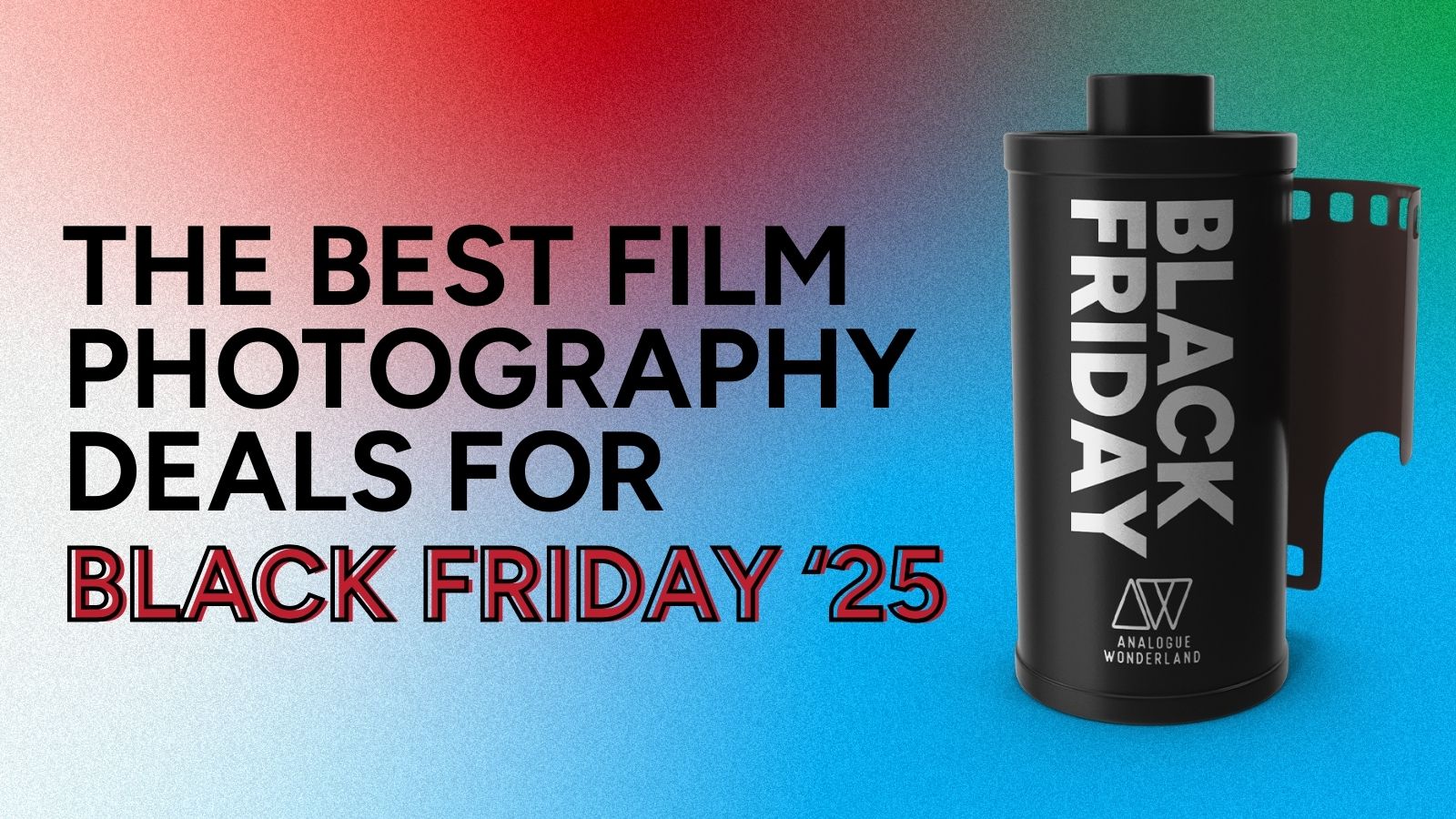Black Friday 2025 has landed at Analogue Wonderland, bringing some of our biggest film photography deals of the year - from discounted film and cameras to money-saving WonderLab processing offers, exclusive bundles, and festive specials available for a limited time only. Grab a great deal while stocks last!

How to use Photographic Filters
By Emma Lloyd
Working at Analogue Wonderland means I am constantly learning more about film photography. I feel like I have access to my own personal film help line. With Paul at his desk next to me in the office I am constantly asking him questions about film, cameras and photography techniques. And it seems only right to share this knowledge with the community! In this blog I shall be delving into the world of photographic filters. Keep reading to find out how to use photographic filters and how they can take your shots to the next level!
What are photographic filters?
Filters are handy bits of kit that are added onto the lens of your camera, completely enhancing your photos. Filters work by altering the way light goes into the camera lens. They can dramatically improve image quality and be used individually, or in combinations to change factors like contrast, sharpness, highlights, colours, colour balance and light intensity. You can also get special effects filters that can add different colours, shapes and patterns to your photos.
Whilst these effects could be added through post production, editing software or when making a print in the darkroom, it is much better to get these details right during the photo taking process.
How do Filters work?
Coatings are applied to filters (these are also sometimes on lenses) that enhance different light transmissions and reduce reflections that can cause unwanted effects in your image, like lens flare and sun streaks.
The general rule of thumb is that the more layers of coatings applied, the more the light transmissions improve. A multicoated filter is more effective than a singular coated filter, which is of course far more effective than a filter with no coating at all. Older cameras often don’t have these coatings on their lenses, so it is worth getting a filter to improve their performance.
Polarising filters work slightly differently by controlling the shape of light waves that enter the lens. Light reflecting off horizontal surfaces like the road, water, or snow is horizontally polarised. A polarising filter positioned vertically will filter out the glare, but still allow plenty of light through.
Diagram showing how polarising filters work (c) scienceworld.ca
Special effects filters work in a similar way, also manipulating the light. However this is done through different shapes and textures of the glass and the filter which changes how the image is seen by the camera. Light changes speed as it moves through the camera and bounces off the different shapes in the filter. This can cause light of different colours to be refracted differently and to leave the prism and different angles, creating a rainbow or mirrored effect.
Photo taken with special effects prism filter (c) MEGABOOTH LTD
How do I use a Filter?
Well first of all, attach your filter to the camera of course! They can either screw directly onto your lens or are attached with an extra mount, which the filter then slots in to. See some examples below. The mounts can be extra useful as they allow you to double up filters, by screwing one directly onto the lens and placing one in the mount attachment. Another bonus for mounted filters is that you can use with multiple lenses (that have different filter sizes).
Screw on lens filters (c) adorama.com
Filter lens mount (c) photoproshop.com
When using a filter there are a few things to keep in mind, especially if your camera doesn’t have TTL (through the lens) metering.
All filters alter the quality of light, however some have no effect on the amount of light that reaches the film. Others reduce the amount of light which reaches the film, and this is where you must consider exposure compensation.
The amount of light a filter blocks is known as the filter factor, and we use this to know how much exposure compensation is needed. A filter factor is a unit of measurement that tells us how much you need to increase the exposure when using a particular filter, this is done by multiplying the un filtered exposure by the filter factor. For example, a filter factor of two means you will need twice as much exposure.
Filter factors & corresponding stop values for daylight film from photographytips.com
If you are using a hand held light meter away from the lens, or calculating the exposure manually, the exposure should be increased by the number of stops that the filter is reducing the lights by, increasing this either by the aperture size or the exposure time. For example, if a filter reduces the -2 stops the exposure should be increased by +2 stops, back up to 0. If you are using a TTL light meter there is no need for this extra compensation.
The importance of Colour Balance and Filters
There are several different types of lighting conditions that you may find yourself shooting in- daylight, incandescent, fluorescent and other light sources all have colour characteristics that vary significantly. The way an object or person will look in your photos is therefore affected by these lighting conditions.
Our eyes and brains can compensate for different kinds of lighting conditions, for example an object viewed outside under the sun vs one viewed under a lightbulb. Whereas our cameras often can't make this differentiation, so our colour films need to be balanced to compensate for different types of lighting and to render colours as they would appear in the original scene. This is where filters come into play as they can help our cameras to adjust to different lighting conditions and balance out colours in the scene.
Colour films are designed to remove specific colour casts from images. They do this by neutralising particular colour temperatures from a light source. Colour temperature is measured in degrees Kelvin (K). This is the standard by which varying hues of light can be measured and compared. The two most common colour-balanced film stocks are 5500K Daylight (D), for use outdoors or with electronic flash and 3200K Tungsten (T), for ordinary household lighting. Good examples of these are the Cinestill range. Conversion filters are used to colour balance the film with the light source, so that the colours in the image match those of the original scene.
The different types of filters and what they do
Sorry, we have had to use digital examples 🤮 but it is a lot clearer to show the immediate effects of filters this way.
Click to enlarge the images
| Filter Type | Description |
| Polarising filters Effect of a polarising filter, before and after. Photo by: 'PiccoloNamek' on Wikipedia Commons | Polarising filters are some of the most popular filter types available. Their main purpose is to remove unwanted refections from surfaces such as water and glass. They can also help make photos look clearer, with better contrast, increased colour saturation, without altering the colour balance. Polarising filters will darken blue sky and enhance details in clouds. They ofter improve the photo's overall quality. |
| Neutral Density (ND) Filters @ADavyphoto ND filters combined with a polarising filter | Think of ND filters as sunglasses for your camera. These filters reduce the intensity of light that enters the lens and modifies all the wave lengths equally. This means that there should be no change in rendition of colour. Therefore, ND filters allow larger apertures or longer shutter speeds to be used that would otherwise result in overexposed image. This in turn allows for more creative control over depth-of-field and recording motion on moving subjects. ND filters are available in various strengths. |
| Graduated ND Filters (c) kenfaith.com | Graduated ND filters, also referred to as 'grads' are filters that vary light transmission by having a certain portion of the filter left clear. Split ND filters have the bottom part of the filter left clear. This allows the the top grey half, for example, to darken a bright sky which might otherwise look blown out in a landscape photograph. You can also rotate these filters to control where the grey half lies in the frame. Centre Spot Filters are grey in the centre and clear at the edges. These can be used to compensate for vignetting by darkening the centre of the frame to match the amount of light fall off in the corners of the image. These filter come in various strength and are also available as either soft or abrupt edges depending on the desired effect. |
| Ultraviolet (UV) Filters Product photo from kenfaith.com | Film is sensitive to UV rays in daylight that are invisible to the naked eye. UV filters are designed to absorb these ultraviolet rays. This helps to reduce the blue colour cast and low-contrast haze that outdoor photographs often have, helping to add detail back into your photo. |
| Skylight | Skylight filters are similar to UV filters but have a light pink colour, which offset stronger blues and emit warmer tones to your images. Skylight filters are available as 1(A) and 1 (B) with (B) absorbing slightly more of the blue and violet spectrum. Neither of these have any effect on exposure, so no compensation is needed. |
| Haze Filters (c) fotoimpex.com | Haze filters work similarly, also absorbing UV light but they have a slight yellow colour to them that warms the bluish cast of daylight. Haze filters can also help to cut down the atmospheric haze that is often seen in open landscapes. This haze can soften an image, especially objects seen in the distance. No exposure compensation is needed. |
| Colour filters- yellow, red, orange, green and blue (black and white photography) @fejling collection of filters See more examples of the effect of coloured filters in black and white photography below | Colour filters control how the colours in a scene are reproduced as greys. Normal black and white films (as opposed to orthochromatic films) are sensitive to all wavelengths of visible light, although the way a camera interprets this will not always match the way our eyes see it. Colour filters help modify the way the camera sees light at the point of capture and the way the film will respond to different colours. |
| Conversion Filters 80 and 85 (c) phphotovideo.com Hoya Colour Conversion 49mm 82C Glass Filter is a lightweight and durable filter that is absorbs the excessive yellow-red light from daylight in the morning and evening hours and keeps skin tones close to natural. | On occasion, the light balance of colour film can be improperly matched to a light source. When this happens, the colours in the image won't match those of the original scene- this is where conversion filters are needed. Colour conversion filters, available in tones A, B and C help to correct differences in colour temperature between film and the light source. For example, if you are using a film that is balanced for daylight in tungsten light setting (indoor), it may create yellow tones to your image. To counter this, use a blue 8oA filter. This will neutralise the yellow to give balanced colour. Exposure should be increased two stops when using these filters. Or, the other way round- when using film balanced for tungsten light in daylight settings you will see a blue cast to your images. This can be corrected through the use of a yellow or orange 85B filter that will neutralise the blue to result in a photo with true colours. Exposure should be increased one stop when using these filters. |
| Special effects filters @TheJackCrofts using prism filter | Special effects filters are also available to add quirky, unusual looks to your images. This could range from kaleidoscopic spirals, to adding different colours and shapes. |
| Stepping ring | This is not actually a filter, but the device which allows you to connect filters and lens hoods that have a different diameter thread size than the lens of your camera to the lens that you want to mount them to. They are available as step-up and step-down rings and are particularly useful if you have a lens with an unusual thread size (The thread size refers to the diameter of the front-most part of the lens, marked with mm or Ø). This saves you buying different filters for each lens (which can be very expensive), instead you can buy one filter and different stepping rings to adapt them to your camera. |
| Splitters Photo by (c) @DBloomsday Photo by (c) @DBloomsday | This may have fitted better into our double exposure blog, but it is a filter of sorts. Splitters allow you to split your image in half by covering part of the lens to create interesting multiple exposures. |
My Experiments with Filters and Black and White Photography
Before I dive into my experiments with filters, let's take a look at what different colour filters can help us achieve with black and white photography. More details on Ilford Photo website.
| Colour | Description |
| Yellow |
|
| Red |
|
| Orange |
|
| Green |
|
| Blue |
|
I wanted to put some filters to the test after a holiday in Cornwall. I had a go at a bit of landscape photography, as one is obliged to do when on holiday in Cornwall. But after developing my film I was disappointed by how flat the images looked, they lacked contrast and I knew they could be improved.
Shot on Olympus OM1 on HP5
In all honestly, I didn't even know about filters until Paul got sent these samples and I was keen to try them to see how much of a difference they really can make to your shots. Paul was sent a red, orange, and a graduated ND filter. They were just samples of the plastic in small sheets, so they didn't fit to to the camera I just had to hold them to the lens. Not the best way to work with filters but it worked well just to test them out!
I tried to be as 'scientific' as possible, by taking 4 of the same shots, placing a different filter over the lens each time and taking the first photograph with no filter at all. I was battling the Cornish wind and sea, but I did my best. I was using Delta 100 for these tests and the conditions were pretty clear, bright and it was nearly sunset. Although in hindsight I think I could have seen the impact of the filters more clearly had I gone out in more cloudy conditions where the contrast in the clouds could be more dramatic.
Testing Filters: the results
No filter, orange, red, graduated ND filter
No filter, orange, red, graduated ND filter
No filter, orange, red, graduated ND filter
No filter, orange, red, graduated ND filter
I was really impressed with the difference the filters made. You can see an immediate change in contrast and much more depth to the images, especially in details like the clouds. It was a bit fiddly to hold up the sample filters to the lens and take the picture, so apologies for the wonky photos, the lens mount or screw on filters will be much easier to use I am sure! Either way, I can definitely see the advantage of filters. This is just the tip of the ice berg in terms of how you can use filters, whether for landscapes, portraiture or special effects photography, there are so many advantages to filters and they will certainly improve the quality of your photos, taking them to a whole new level.
(red filter Vs no filter) Side by side photo showing the difference that using a red filter on your photos can make.
Filter Tips from the Film Community!
Hear all about how our twitter family uses filters, perhaps it will inspire you to give them a go!
- @moragperkins "For colour I almost always use a circular polariser when the sun is out! Makes a huge difference."
- @Givemeabiscuit "Yellow, Orange or Red at times with B&W (Orange the fav). Especially good to get some cloud/sky definition CPL with slide film, the colour pop IR72 for infrared Lee filters soft grad or big stopper for long exposure"
- @Palaeoboy "I do love an R29 for a bit of drama. But I also use yellow and I have a large 7 stop variable ND filter that I mainly use on an ancient barrel lens with no apertures if the light is too much."
- @ADavyphoto ND filters combined with a polarising filter for a long exposures (see photo below)
@ADavyphoto ND filters combined with a polarising filter
- @tomnorthenscold "I almost always use a yellow filter when shooting B&W for tonal separation and contrast.. "
- @CheryleeLegair "I have a combo 5 stop ND filter with a CPL that I keep in my backpack to get some slower shutter speeds in harsh lighting… this is mainly used for colour film..."
@CheryleeLegair
- @Alun_B "I use a yellow a LOT for B&W. Also have an IR filter that's great fun."
- @fejling "I shoot b&w 99% of the time so big user of filters… "(see their collection of filters below)
@fejling collection of filters
Morag Perkin's @moragperkins shots using a circular polariser
"...I use a circular polariser for colour film any time it's sunny... I think of it like sunglasses for the camera, it cuts glare (or lets you control the amount of it) and increases saturation quite a lot so you get a more punchy effect. Also good for reducing reflections...As you can see if you point it towards the sun it often adds a bit of lens flare too but I quite like that!"
For further tips on filters and much more...
This book has become my film photography bible and was extremely helpful in putting this blog together. It is jam packed with useful photography tips and leaves no stone un-turned- from lenses, shutter speed, different types of cameras all the way through to how to keep your camera clean and safe. It seriously covers everything and will be useful to any film photographer, whether a beginner or a pro!
I truly feel converted after seeing the difference filters can make to film photography. There are so many different filters to try, whether you are looking to up the quality of your images or just wanting to add some cool psychedelic effect to them for fun. I hope you have found this blog useful, perhaps you will consider making filters a part of your film photography ritual!
Ready to dive in?
Keep Reading
View all
Christmas 2025: Shipping & Opening Hours
Christmas 2025 is fast approaching! To make sure your analogue goodies arrive in time, take note of our last shipping dates, plus opening and operating hours over the festive season. We've got everything you need to gift the magic of film photography this Christmas!

Film Photography Christmas Gift Guide 2025: Analogue Wonderland
Capture the magic of Christmas with film - no filters needed. Our 2025 Film Photography Christmas Gift Guide 2025 is packed with thoughtful presents for every type of shooter, from curious beginners to seasoned photographers. Discover film stocks, cameras, and creative accessories that will make this festive season truly memorable.
Subscribe to our newsletter 💌
Sign up for our newsletter to stay up to date on film photography news, sales and events:
Free Tracked Shipping
On all UK orders over £50
Passion For Film
An unbeatable range and an on-site lab
Our Customers Trust Us
Thousands of independent 5* reviews
All Deliveries are Carbon Neutral
Independently audited and verified by Planet
- Opens in a new window.






1 Comment -
John Neville Cohen •
Very interesting! I think readers will like my ‘Magic Lantern’ found on my website. All special effects that I invented in the early 1960’s whilst using Kodachrome. With best wishes,
John